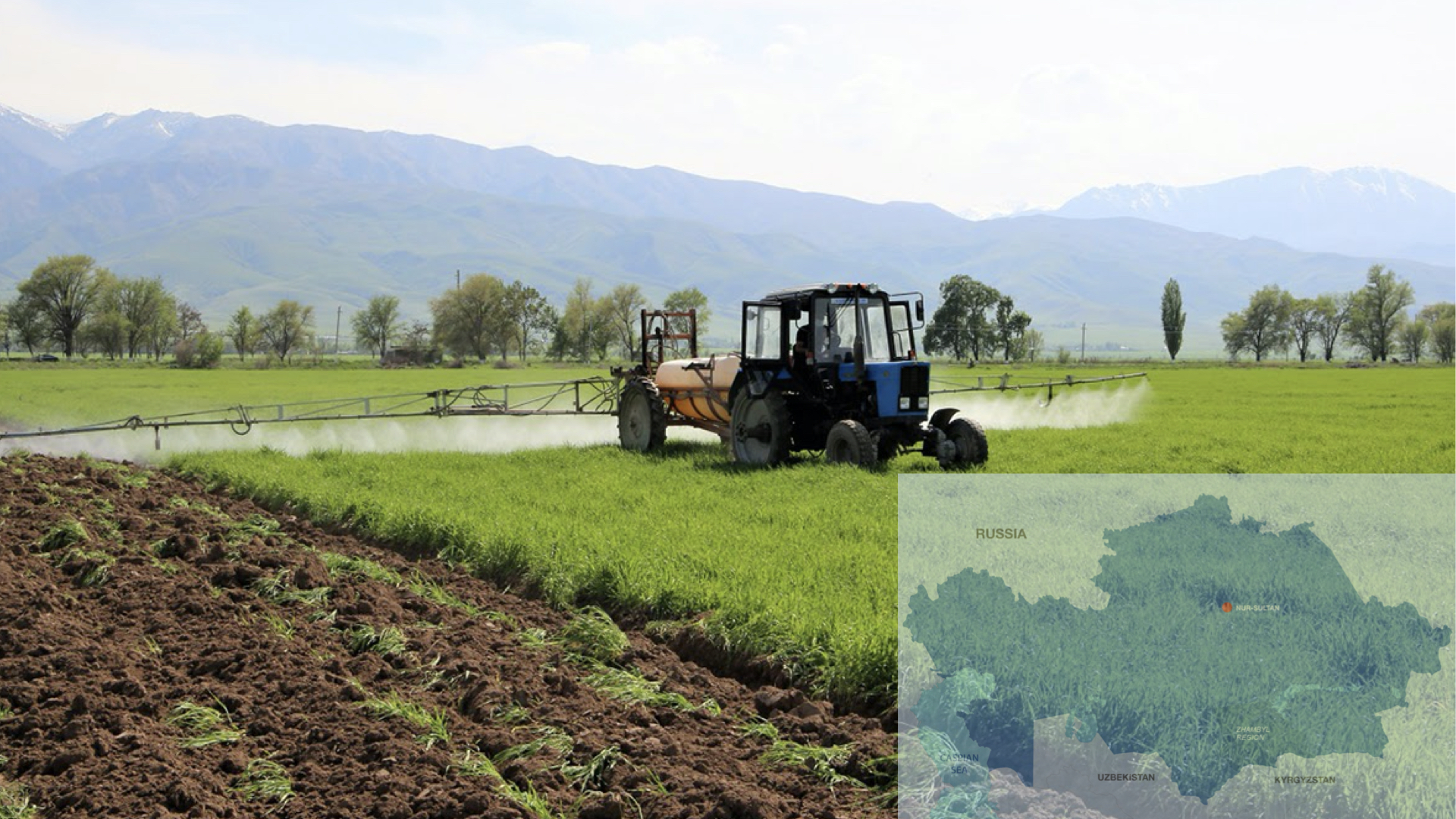NUR-SULTAN — The Zhambyl region’s main drivers of socio-economic stability comes from key industries such as manufacturing, trade and agriculture. At the end of 2020, the region retained its growth dynamics in all major economic indicators, reports primeminister.kz.

Sowing has already begun in the Zhambyl region’s fields. Click to see map in full. Photo credits: primeminister.kz.
According to the analysis of the development of manufacturing, tourism industries, small and medium-sized businesses, the volume of investment in fixed assets and retail trade, the implementation of government programs, the region retained its growth dynamics and laid down a good foundation for further development.
The region’s economy grew by 2.2 percent, over 19,000 permanent jobs were created. The unemployment rate is 4.9 percent below the national average, inflation also showed less growth in 2020.
SMEs (small and medium-sized businesses)
About 70,000 SMEs operate in the region, employing 126,500 people (January-September).
Despite the negative impact of the pandemic, as a result of the support provided by the state, the volume of products and services of entrepreneurs increased by 1.2 times and amounted to 467.4 billion tenge (US$1 billion) in 2020.
Around 11 billion tenge (US$25 million) was allocated as state support to SMEs.
To support entrepreneurship within the framework of the Enbek program for the implementation of new business initiatives, 7.800 people received non-repayable state grants and 1.300 entrepreneurs received microcredits.
Manufacturing Industry
In the manufacturing sector of the Zhambyl region at the end of 2020, the growth rate was 103.1 percent. Enterprises in the Zhambyl region produced products worth 504.8 billion tenge (US$1.1 billion).
The positive dynamics of development are mainly due to the growth of production in the following manufacturing industries: the chemical industry (104.8 percent), the metallurgical industry (106.8 percent), the production of other non-metallic mineral products (106.4 percent), light industry (185.7 percent) and the production of refined products (102.2 percent).
Agriculture Industry
Investments in agriculture in the Zhambyl region reached 29.5 billion tenge (US$ 68 million) in 2020.
At the end of 2020, the volume of total agricultural production in the Zhambyl region amounted to 381.9 billion tenge (US$880 millions), with crop production – 223.2 billion tenge (US$514 millions) and animal breeding – 157.7 billion tenge (US$363 millions).
The production of meat, eggs and milk has increased compared to the corresponding period last year.
In total, in 2020, commodity producers in the region exported 1246.5 tons of meat, of which 377.5 tons were beef, 512.6 tons were mutton, 356 tons were poultry meat and 0.5 tons were horse meat.
For the 2020 harvest, the sown area of farms amounted to 734.900 total hectares, including grain and leguminous crops (378.800 hectares, oil crops – 56.500 hectares, sugar beet – 4.600 hectares, potatoes – 11.200 hectares, vegetable and melon crops – 54,000 hectares, fodder crops – 229.700 hectares.
Housing
Within the framework of the Regional Development Program in the Zhambyl region for 2020, 417 houses were repaired for a total cost of 9.6 billion tenge (US$ 22 million).
The Head of Government Askar Mamin named the Zhambyl region among the nation’s leaders in terms of housing commissioning rates.


